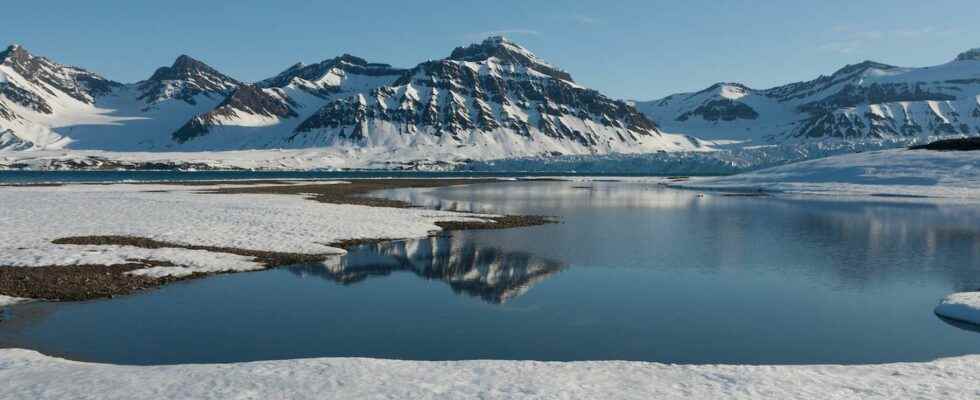Due to global warming, Greenland ice could contribute to a sea level rise of several meters over the next few centuries. However, efforts to mitigate global warming could greatly reduce this risk if greenhouse gas emissions are limited.
You will also be interested
[EN VIDÉO] The impressive melting of Helheim Glacier, Greenland The calving of Helheim Glacier in southeast Greenland is aesthetically fascinating as several videos show. But it is worrying from a climatic point of view.
One of the most serious effects of climate change is sea level rise, largely linked to melting from glaciers and ice caps. This rise in sea level will necessarily lead to the submersion of many inhabited lands, and therefore to an explosion in the number of climate refugees.
The University of Cambridge has simulated the evolution of Greenland ice up to the year 3000 to understand the impact of climate change in the 21stand century over the following centuries. The professors of the University used the international model ISMIP6 (Ice Sheet Model Intercomparison Project for the Coupled Model Intercomparison Project Phase 6) to study several scenarios: twelve configurations in which the warming continues uninterruptedly until the year 3000 in the same way as it currently evolves until the year 2100, and two other hypotheses in which the emissions greenhouse gas emissions are decreasing until 3000. The researchers used the climate projections available until 2100, in view of the current trend in greenhouse gas emissions. Over the past 20 years, theice melt intensity occurred six times faster than the rate estimated before the industrial revolution.
The reduction in greenhouse gas emissions has a major impact
Through these different scenarios, thestudypublished in the Journal of Glaciologyconcluded that the reduction of greenhouse gases had considerable consequences on the evolution of the ice in Greenland, and therefore on the rise in sea level. If the emissions of greenhouse gases continue at the same rate, maintaining the current trend global warmingthe sea level could rise by 0.71 to 3.54 meters due to the volume of melted ice. In the case of scenarios reducing greenhouse gas emissions, the rise in sea level due to this volume of water would be between 0.16 and 0.4 metres.
In other words, if nothing is done to mitigate the current global warming, the University predicts a rise in sea level of several meters by the year 3000, knowing that certain areas, like the southern coasts of the USA, have already gained 30 cm since the industrial revolution. Until the end of the 1990s, the Greenland ice sheet was gaining as much mass thanks to the snowfall in winter that it lost in summer with the melting of the ice. Over the past twenty years, the intensity of melting has occurred six times faster than the estimated pace before the industrial revolution. A complete melting of the Greenland ice caps would raise sea levels by seven metres.
In the future, the Cambridge researchers plan to use more distant climate projections, those after 2100, to obtain more precise results. Corn these first data prove that the current evolution of the weather may have consequences for the next 1,000 years.
Interested in what you just read?
